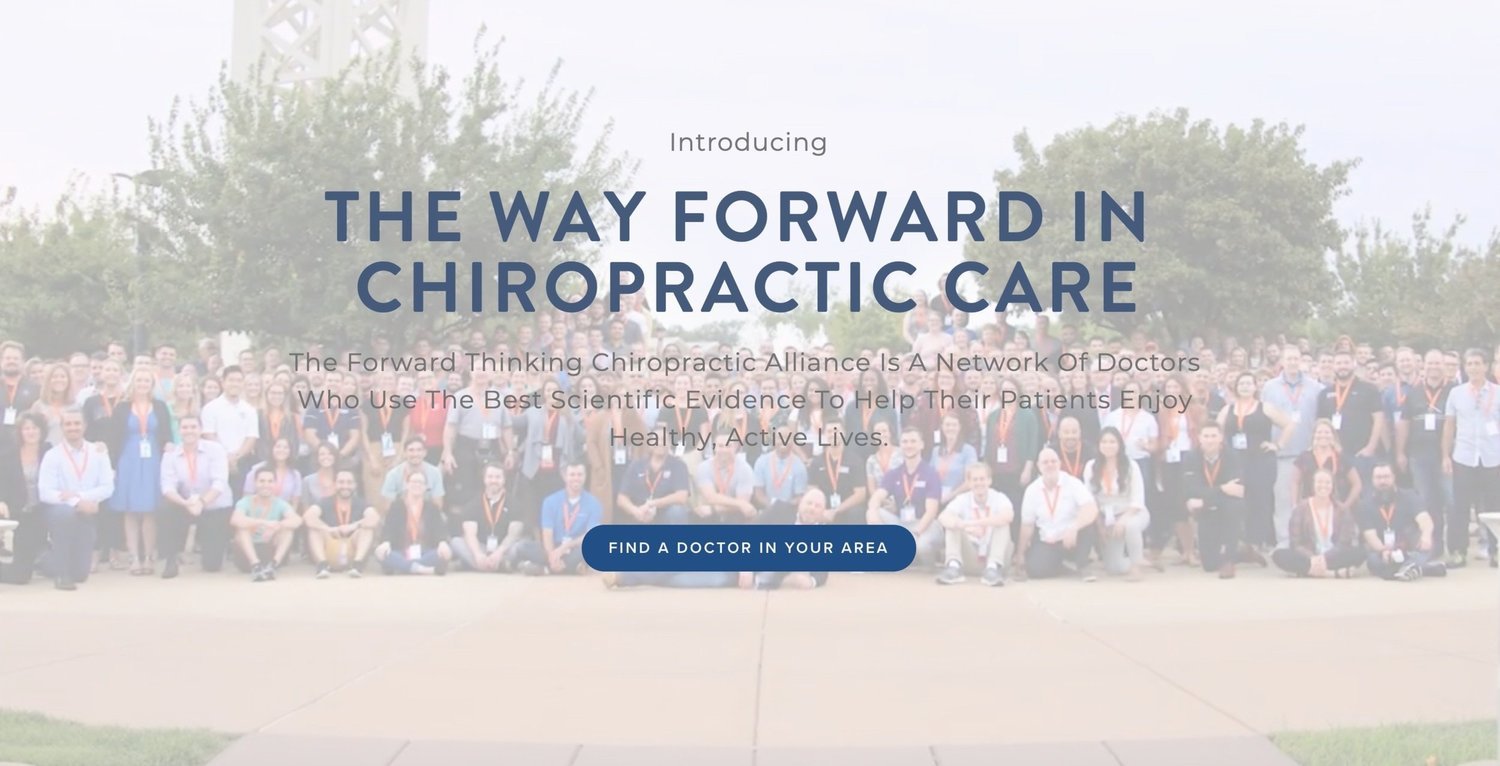- Joined
- Jan 13, 2004
- Messages
- 506
- Reaction score
- 22
Both chiropractors and physical therapists compete for the same pool of rehabilitation patients but there are some important differences. Many chiropractors also claim to offer rehabilitation in addition to passive spinal manipulation. Let's look at the data.
Physical Therapy
While all PTs can treat musculoskeletal conditions around 10% of PTs receive the Orthopedic Clinical Specialist (OCS) certification which can either be done through a residency program or submit 2,000 hours of direct patient care within the specialty area as a licensed PT. Around 30% of PTs get training in spinal manipulation and it is permitted in 40 states.
OCS DPT certification generally requires 10-12 hours per week of self-study over a five year period which totals 3,120 study hours.
Typical OCS resident programs offer 357 hours of education which breaks down as:
Johns Hopkins Medicine Orthopedic Physical Therapy Residency
Straight chiropractic (Life University, Palmer University, Sherman College of Chiropractic)
Physical Therapy
- Evidence-based curriculum
- 30% of PTs perform spinal manipulation.
- PTs are proven to be safer providers of manipulation than chiropractors (93% of problems from DCs vs 6% from PTs). Accordinly, physical therapist malpractice insurance is 10x cheaper than what chiropractors pay.
- 30% of PTs have OCS certification which shows expert status in rehabilitation
- May supervise expanded scope physical therapy assistants which allow for more delegation of tasks and less work for the PT.
While all PTs can treat musculoskeletal conditions around 10% of PTs receive the Orthopedic Clinical Specialist (OCS) certification which can either be done through a residency program or submit 2,000 hours of direct patient care within the specialty area as a licensed PT. Around 30% of PTs get training in spinal manipulation and it is permitted in 40 states.
OCS DPT certification generally requires 10-12 hours per week of self-study over a five year period which totals 3,120 study hours.
Typical OCS resident programs offer 357 hours of education which breaks down as:
Johns Hopkins Medicine Orthopedic Physical Therapy Residency
- 136 hours of classroom/lab instruction.
- 96 hours: Four three-day didactic weekends.
- 40 hours: Weekly lecture/labs throughout the year.
- 221 hours: Independent study
- All chiropractors believe in the false idea that spinal manipulation is a valid treatment for spinal hypomobility which is the de facto reason for the field to exist and is believed to halt osteoartritis by itself. Spinal hypomobility determined by unreliable assessments is to chiropractic what dental caries are to a dentist. It justifies lifetime passive care. This idea is disproven by modern biomechanical research and is pseudoscience. While spinal manipulation can abort muscular hypertonicity and provide afferent stimulation which is useful for rehabilitation, it has no lasting effect on osteoarthritis. Interestingly, chiropractors do not address known causes of osteoarthritis including exercise, weight management, and joint protection.
- All chiropractors learn spinal manipulation early in their DC program curriculum which fosters a belief in the legitimacy of unreliable chiropractic technique analysis systems independent of accurate medical diagnosis.
- Passive rehabilitation modalities termed "Physiotherapy" are taught as a 120 hour elective course that includes diathermy, ultrasound, and electrical stimulation. This is the only subject tested as an optional national chiropractic board exam.
- Active rehabilitation is not included in the accredited core curriculum.
- Chiropractic assistants are extremely limited in what they may do versus physical therapy assistants. They can not give exercise instruction etc which means chiropractors are more time-limited than PTs and can not spend as much time with patients.
Straight chiropractic (Life University, Palmer University, Sherman College of Chiropractic)
- Promote non-evidence-based care with low standards.
- Generally have been against incorporating alternative medicine, and conventional medicine (vaccination) and disdain evidence-based care in favor of using chiropractic spinal manipulation as a panacea to treat any condition.
- Highly critical of medicine but know very little about it.
- Teach a dual curriculum emphasizing red flag identification with spinal manipulation regardless of clinical presentation and as prophylaxis.
- Have traditionally limited treatments to spinal manipulation but are starting to branch out into pseudo-rehabilitation as a way to bolster their quackery-tarnished image.
- One straight chiropractic institution, Life University, with a history of accreditation problems due to failing to teach evidence-based diagnosis and treatment and cronyism in paying administrators extremely high salaries, is falsely marketing a pseudoscience-based rehab technique called Functional Kinesiology as legitimate high-quality rehabilitation.
- Functional Kinesiology is an offshoot of Applied Kinesiology and Traditional Chinese medicine.
- One straight chiropractic institution, Life University, with a history of accreditation problems due to failing to teach evidence-based diagnosis and treatment and cronyism in paying administrators extremely high salaries, is falsely marketing a pseudoscience-based rehab technique called Functional Kinesiology as legitimate high-quality rehabilitation.
- High volume, multiple lifetime treatments.
- Advocate for a limited scope based on passive manipulation as "spinal subluxation adjustments" which encourages patient dependency.
- Medical associations have generally supported straight chiropractic's emphasis on limited scope as a way to contain chiropractic but at the cost of promoting the more anti-science/pseudoscience based straight chiropractic colleges (see Wilk v. AMA).
- Lack of trust in conventional medicine combined with truncated or nonexistent differential diagnosis increases the risk that patients with serious medical conditions (ie. stroke) will not receive appropriate treatment and may be injured.
- Generally provides a mix of semi-evidence-based diagnosis and treatment for musculoskeletal problems utilizing passive treatments allowed by chiropractic scope plus other treatments such as active rehabilitation and alternative medicine (functional medicine) which often includes pseudoscience (Naturopathy, Applied Kinesiology, Traditional Chinese Medicine, Acupuncture).
- Still support the pseudoscientific belief that treatment of spinal hypomobility using only spinal manipulation is a cure for osteoarthritis.
- Usually, lower-volume care incorporates evidence-based passive treatments combined with some basic active rehabilitation and alternative medicine.
- Any active rehabilitation instruction is solely up to the discretion of the chiropractic college with no across-the-board standardization and testing.
- A few states allow for expanded scope into minor surgery. Chiropractors in these states generally favor scope expansion.
- Medical associations generally support the added emphasis on evidence-based medicine but oppose mixer chiropractor's attempts at scope expansion.
- An example of the limited hours of chiropractic rehabilitation coursework can be seen here where Northeast College of Health Sciences has only giving 2 credit hours for active rehabilitation, 2 hours for passive rehabilitation and one hour for Connectix (similar to Graston soft tissue therapy). Remember this is supposed to be a top tier school emphasizing rehabilitation. You can find all of the NCHS courses listed if you search by course number and reference the Quizlet website. This will give you an idea of the content. Example: "ATP6604 Active Care" gives Active Care Midterm Flashcards | Quizlet.
- Only 0.5% of chiropractors obtain advanced diplomate status in rehabilitation (DACRB) which requires 135 hours of classroom instruction.
- Many chiropractors advertising rehabilitation only complete a 100-hour Chiropractic Sports Physician (CCSP) course.
- Chiropractors may even complete a 48 hour online certificate course in rehabilitation.
- None of these programs require any direct patient experience.
- Mixer chiropractors often participate as providers in multi-disciplinary practices with MDs providing rehabilitation. These practices generally utilize cheaper, less experienced non-OCS-certified physical therapists to provide rehabilitation.
- Physical Therapy does a superior job of providing comprehensive, standardized, evidence-based rehabilitation training versus chiropractic programs. Classroom instruction is double for PT at 357 hours versus 125 class hours for DCs). PT also beats chiropractic by requiring 2,000 patient care hours versus 0 hours for chiropractic).
- Many chiropractors suffer from the Dunning-Kruger Effect. Their lack of training and exposure to thorough evidence-based rehabilitation programs causes them to believe they are better trained than they are.
- Physical Therapy has the advantage of wider assistant scope which means PTs can off-load more tasks to free up time providing for better care.
- Physical Therapists who perform manipulation have a much better safety record (1:15 complications for PT vs DC).
- OCS-certified physical therapists have far more experience in active rehabilitation than chiropractors.
- Chiropractors who see many patients generally do not spend much time with them.
- Chiropractic's tolerance and promotion of pseudoscience and anti-science have given them a bad reputation with physical therapy associations and has blocked an accelerated transfer program upgrade path to the OCS DPT. The APTA rejected a proposed DC to DPT track program proposed by Stanley Paris, PhD, PT, FAPTA.
- Many chiropractors and chiropractic schools survive through effective advertising that promotes a false impression of superior care. This generally goes unchallenged by MDs and OCS DPTs. This chilling effect started when chiropractors won a major antitrust lawsuit against the AMA (Wilk v. AMA) and continues to this day.
Last edited:

